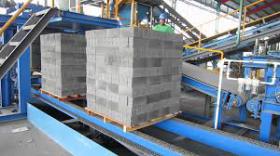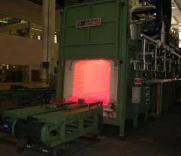
Brick making in the Developed World
In the developed world bricks are made on an industrial scale and the manufacturers try to be as efficient and ecologically friendly as possible, but they use huge amounts of energy and produce CO2 emissions and other hazardous emissions.
Bricks are made from clay and shale - some of the most abundant materials on earth - and then fired in a kiln at up to 2,000° F. By going through a chemical-transforming, vitrification process in the kiln, the minerals in the clay/shale unit fuse together and become a building brick.
First the bricks are dried for between 30 to 40 hours at temperatures of 80-100 degrees Celsius. Then they are baked at up to 40 hours at temperatures of 1.930 degrees Celsius. Every year in the developed world, billions of bricks are produced using these processes. The amount of energy needed for the above mentioned operations is colossal. While natural gas is the most frequently used energy source for brick manufacturing, many manufacturers are using waste products, such as methane gas from landfills and sawdust, for brick firing.
Huge amounts of energy are needed and they are all major sources of CO2 emissions and global warming.
When the use of BotBriks in developed countries is established then the demand for conventional building bricks would be reduced. This would naturally create less activity in the brick building industry with the consequent reduction of energy use and greenhouse gas emissions.

